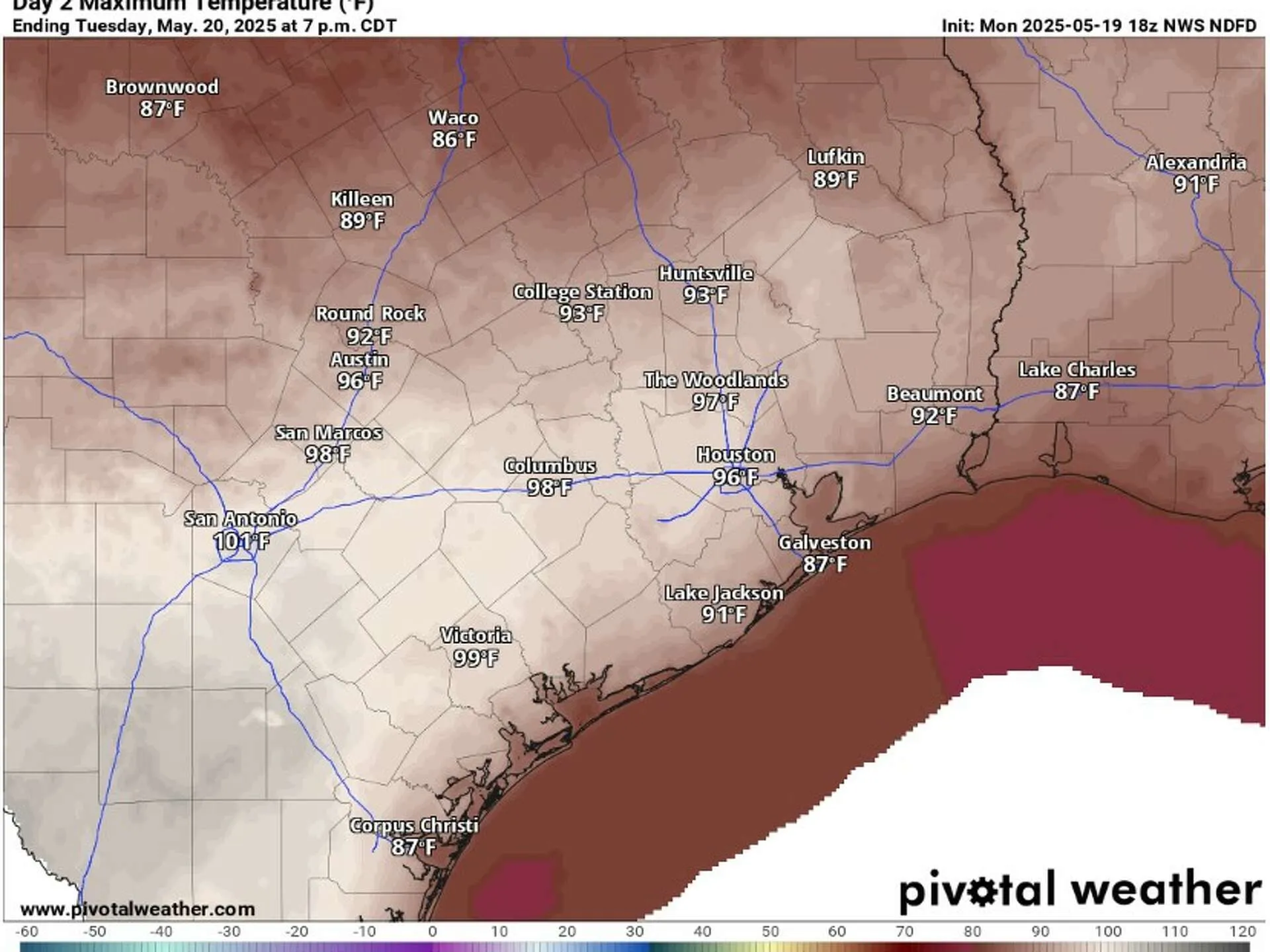Rising Temperatures: San Antonio Faces Near-Record Heat Amidst Returning Humidity
As the sun beats down on San Antonio, residents of this vibrant city find themselves grappling with the reality of near-record high temperatures. With the mercury climbing rapidly and the humidity making a comeback, locals are on alert as the heat index is projected to potentially reach a staggering 104 degrees. This push into the summer heat raises questions about how hot it could potentially get, and what steps people can take to stay safe.
The Current Heatwave
San Antonio has been experiencing an early onset of summer heat, with temperatures consistently inching towards record levels. This week, forecasters predict that the city could face highs in the upper 90s, a stark contrast to the relatively mild spring temperatures that residents enjoyed for much of the year.
As experienced by many cities across the U.S., changing climate patterns have resulted in shifts in weather norms. San Antonio, known for its humid subtropical climate, has had this season’s humidity return with a vengeance, exacerbating the discomfort of rising temperatures. The combination of heat and humidity significantly impacts how the body perceives temperature, leading to higher heat indexes that can pose a threat to health.
The Health Risks of Extreme Heat
High temperatures combined with an increase in humidity levels strain the body’s ability to regulate heat. As the heat index climbs, the risk of heat-related illness escalates, particularly for vulnerable populations such as the elderly, young children, and those with underlying health conditions. Symptoms of heat exhaustion may include heavy sweating, weakness, cold, pale, or clammy skin, and fast or weak pulse. Recognizing these symptoms can be crucial for preventing more severe forms of heat-related illnesses.
The local health department has issued warnings urging residents to take precautions during this intense heatwave. “Stay hydrated, avoid outdoor activities during the hottest parts of the day, and check on your neighbors, especially the elderly,” a health official advised. Public resources, including cooling centers, have been set up throughout the city to provide relief for those in need.
Understanding the Science Behind High Temperatures
The primary contributors to the extreme heat experienced in San Antonio can be traced back to several factors, including climate change, urbanization, and changing global weather patterns. As the Earth’s average temperatures rise, San Antonio, like other regions, is experiencing hotter summers and warmer winters.
Data from the National Weather Service (NWS) indicates that the city has had an increasing number of days with temperatures above 100 degrees in recent years, reflecting broader trends seen across Texas and the southwestern United States. The phenomenon of urban heat islands, where urban areas experience significantly warmer temperatures than their rural surroundings due to human activities, plays a major role in exacerbating heat in San Antonio.
Future Forecasts: What to Expect
As the weather forecast rolls in, meteorologists urge residents to stay informed about changing conditions. The immediate outlook suggests that the near-record highs could stretch into the next week as a high-pressure system settles over the area. While there may be some relief in the form of evening winds, these will likely do little to mitigate the daytime heat.
Regular updates are issued by the NWS, offering safety tips to help residents manage the heat effectively. “The most important thing to remember is to listen to your body,” advises John Smith, a local meteorologist. “If you start feeling overheated, it’s time to seek shade, a cooler environment, or even water.”
Community Responses and Adaptations
In light of these extreme temperatures, many community organizations in San Antonio have stepped up to provide support. Initiatives aimed at keeping vulnerable populations safe through outreach and education have gained momentum. Local nonprofits are distributing fans and bottled water to those who may otherwise remain indoors without air conditioning.
Additionally, many schools are adapting their summer programs to keep outdoor activities limited to the cooler parts of the day. “We want to make sure our kids are both active and safe, so we’re moving sports practices and outdoor events to early mornings and later in the evenings,” shared Sarah Johnson, a community program coordinator.
Social media channels, particularly local groups on platforms like Facebook, have become hubs for sharing information about cooling stations, shade coverage, and community activities that provide relief from the heat.
Preparing for Extreme Heat: Personal Action Plans
Aside from community efforts, individual preparation is key in facing these oppressive heatwaves. Here are several recommendations residents can implement to safeguard themselves against rising temperatures:
- Stay Hydrated: Drink water consistently throughout the day, even if you don’t feel thirsty.
- Limit Outdoor Exposure: Plan outdoor activities for the early morning or late evening to avoid peak sun hours.
- Wear Appropriate Clothing: Choose light-colored, loose-fitting clothing to help your body cool down.
- Use Air Conditioning: If you do not have AC, seek out public places like malls or libraries that do.
- Monitor Vulnerable Neighbors: Check on friends and family members, especially those who are elderly or live alone.
The Bigger Picture: Climate and Future Challenges
While today’s weather is a pressing concern for residents, it is also a critical moment to expand the dialogue surrounding climate change and its impacts. The increase in heat-related incidents prompted by shifting climate patterns is an issue that requires attention beyond the immediate discomfort.
Local environmental advocacy groups are pushing for policies aimed at enhancing green infrastructure, increasing tree coverage in urban areas, and promoting education around climate change adaptation practices. “It’s not just about today’s heatwave; it’s about what we can do to prepare for the future,” stated Emily Reyes, an environmental activist. “Our city is at a tipping point, and we need to adapt to the changes we face.”
Conclusion
As San Antonio navigates this near-record heat wave, the combination of high temperatures and returning humidity serves as a stark reminder of the challenges presented by summer weather. The city’s residents are encouraged to take precautionary actions to mitigate heat-related risks and engage in community efforts to support one another.
In the face of these rising temperatures, the relentless Texas sun will continue to shine down, reinforcing the urgency for a forward-thinking response to climate change, ensuring that San Antonio remains a resilient and thriving city for years to come.







